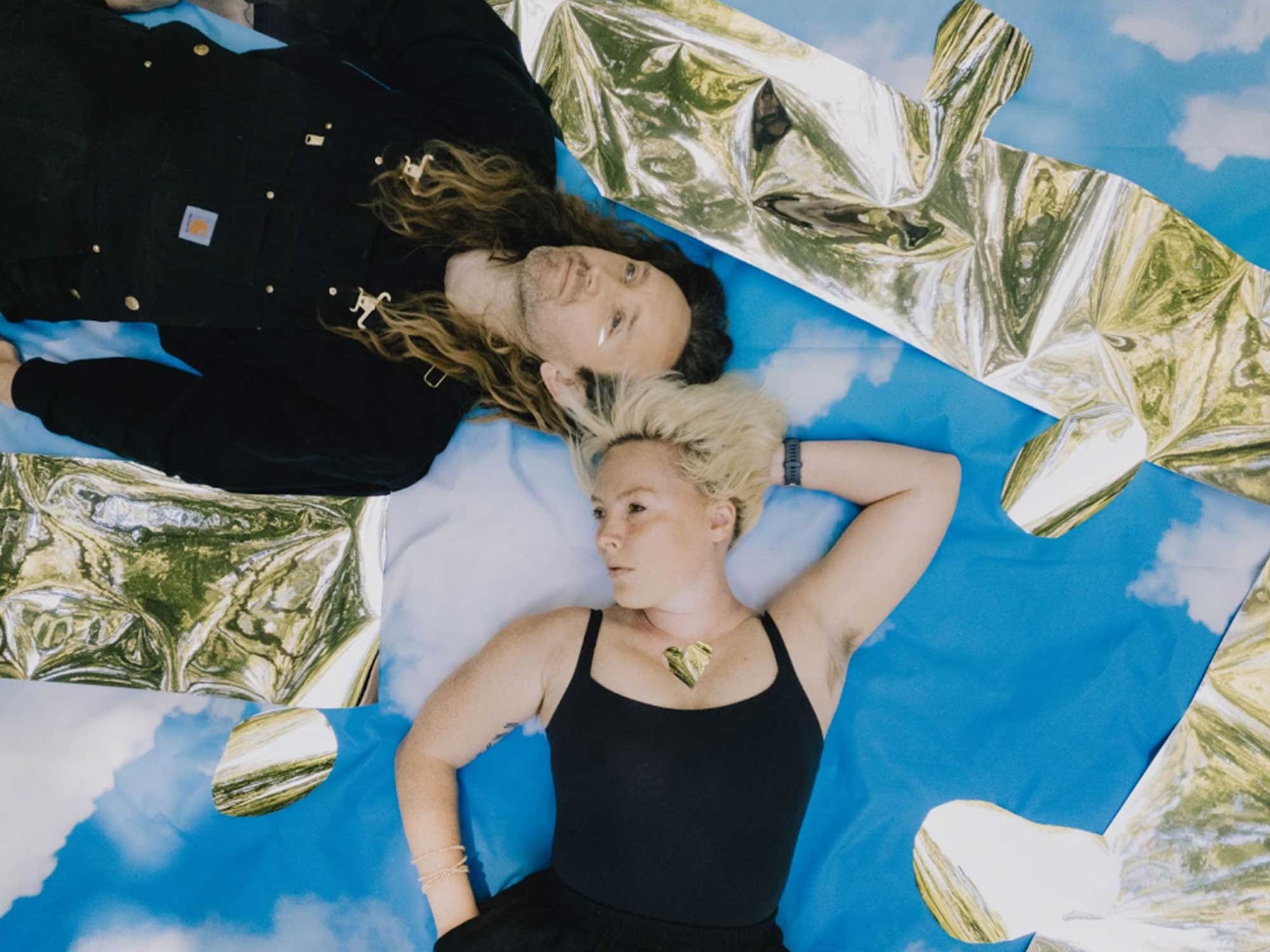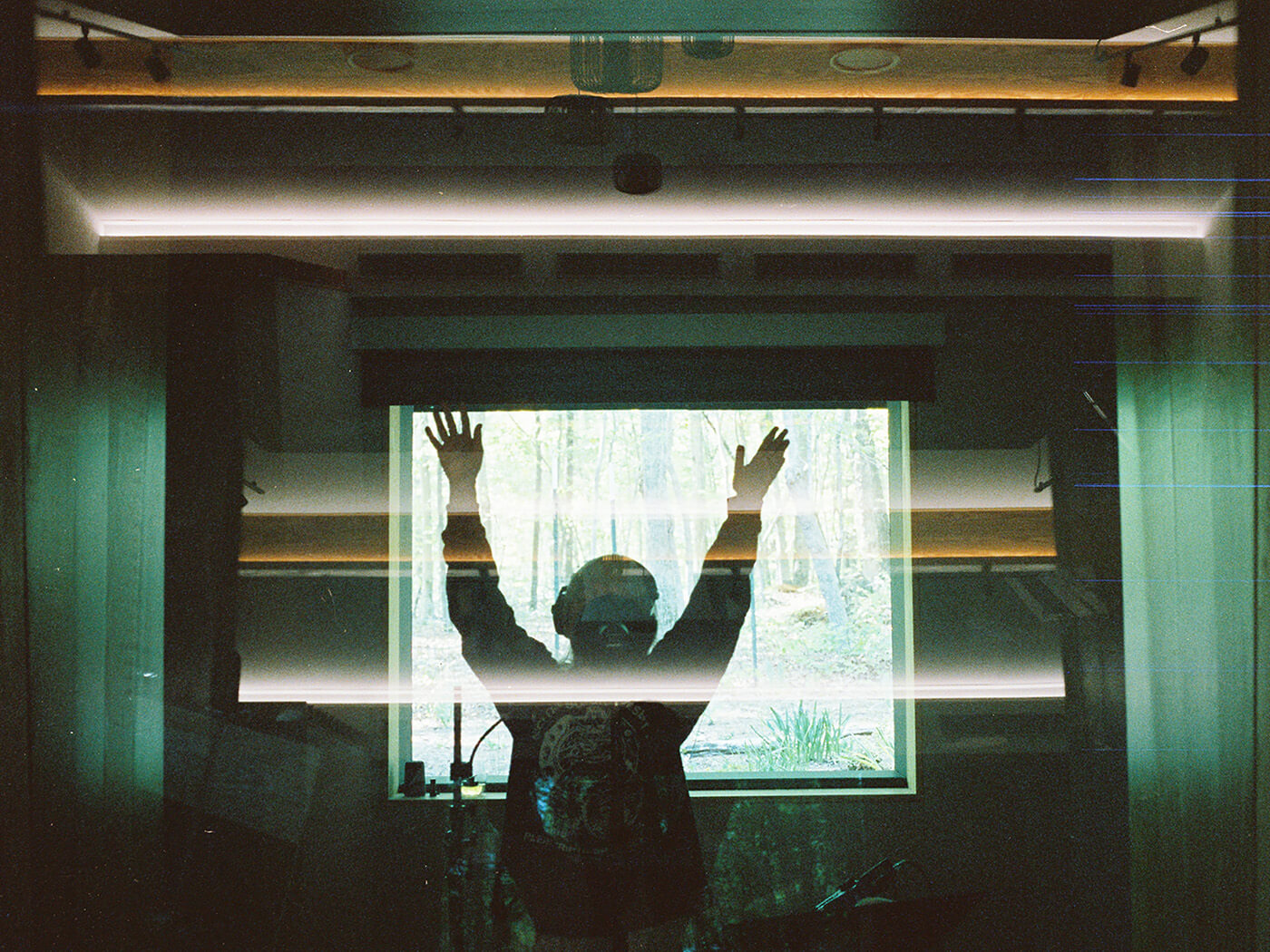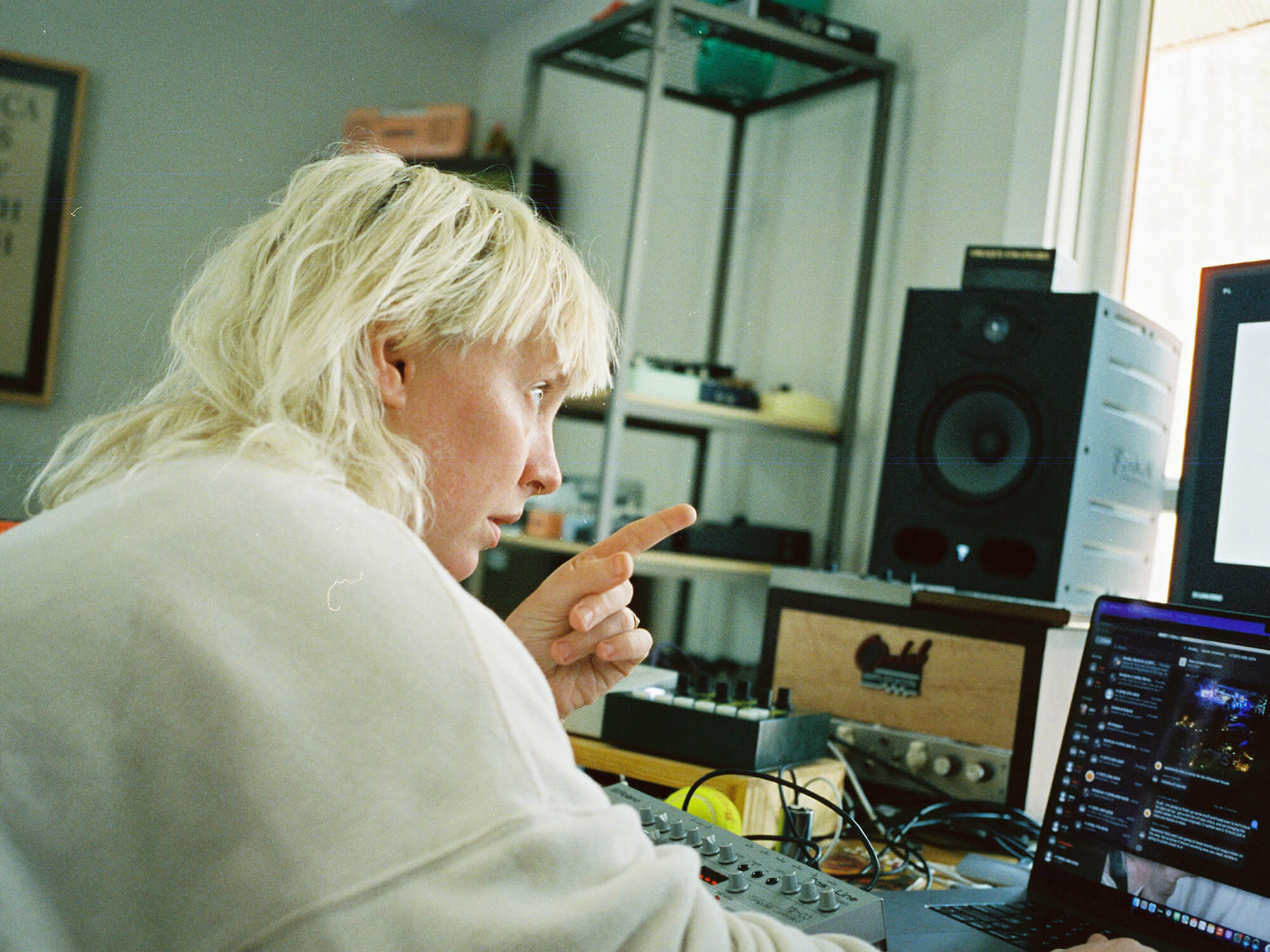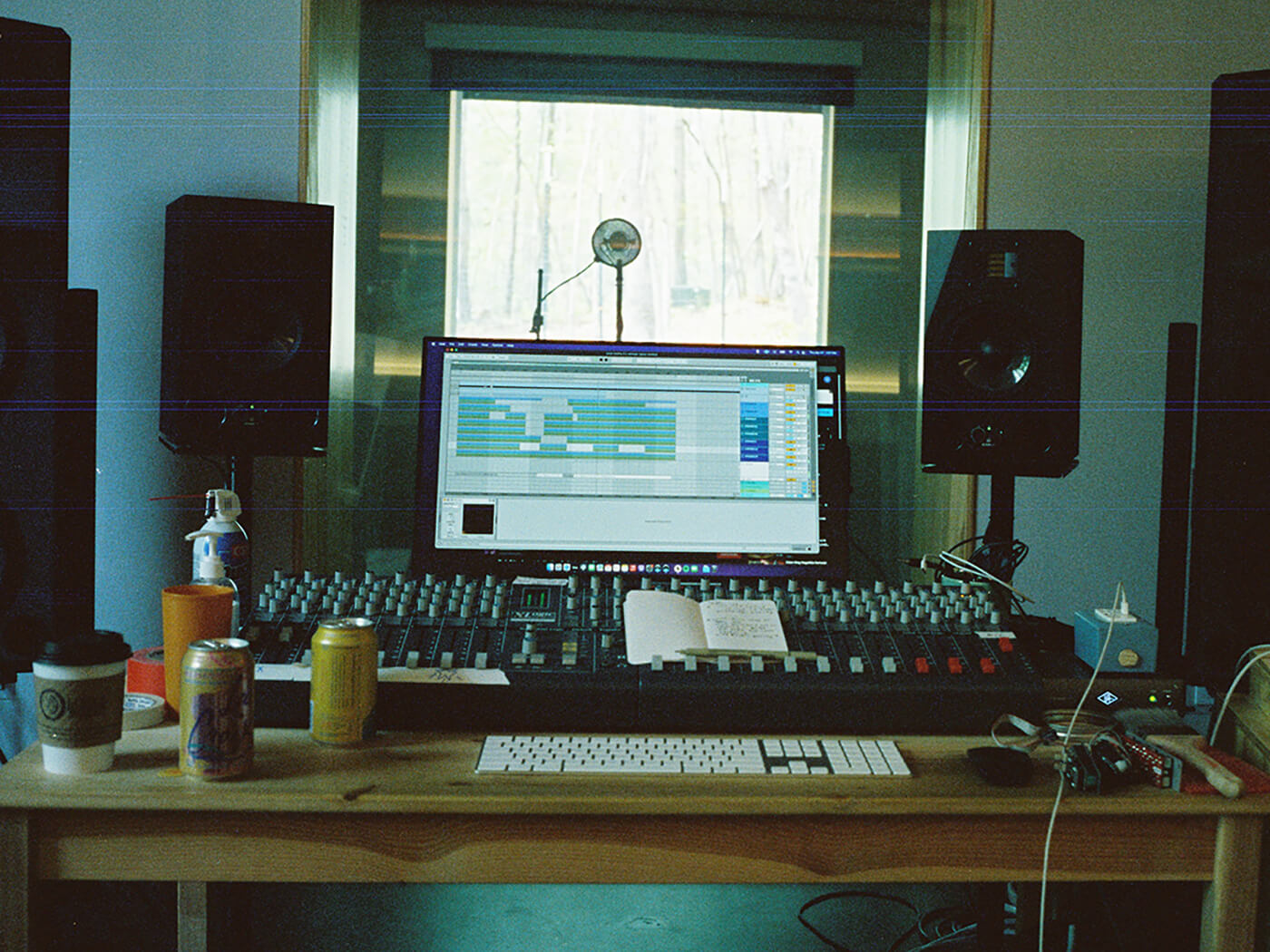Modular racks, Moog synths and sandwiches: Inside ‘Betty’s’, Sylvan Esso’s “off-grid” studio
The day before a nine-week tour, electronica couple Sylvan Esso tell us about how the surprises of modular gear propel them forward and how, as each other’s “biggest fans”, they encourage one another towards sonic success

Photo credit: Graham Tolbert
In Chapel Hill near Durham, North Carolina, Sylvan Esso vocalist Amelia is returning from her local store with sandwiches. Meanwhile, her husband and fellow producer Nick Sanborn sits in their studio. Amelia’s speaking to us on FaceTime as she hurries back, while we talk with Nick via Zoom.
The studio space, named ‘Betty’s’ after Sanborn’s grandmother, is in the woods next to their home, “off-grid”, they say. It’s an open space available for visiting musicians; they rent out Betty’s and their home to friends at little or no cost, prioritising artistic freedom over profit.
“We could start a cult at the drop of a hat!” Nick jibes. “This is our homestead – but sandwiches, we order out.” Suddenly, Amelia exits the conversation only to appear next to Nick in the studio, shaking off her coat and unravelling their lunch.
Twice Grammy-nominated Sylvan Esso are a joyous pair. Their varied electronic sounds can lean into acoustic genres as well as synth-heavy abstract, experimental styles. Nick’s brash synths act as a revolving ribcage around the heart of Amelia’s vocals, which are often tender and gentle. The resulting sound is a unique juxtaposition.

They’re about to embark on a nine-week tour of the US and Canada. Consequently, the studio, with its large floor-to-ceiling window and cabin-like wooden beams, is slightly chaotic – flight cases sprawl across its eucalyptus green floor. Preparation, they say, is a more mundane task than the usual music-making tomfoolery that takes place in the space. Mapping their gear, setting up presets on modular gear, and preparing loops feels “like homework,” they grumble.
“For the live shows, we have Ableton Live running stems with a FaderFox mixer for computer control,” Nick says of their live setup. “There’s a separate computer handling live looping of Amelia’s voice and effects. I have a Eurorack modular rig for drums and samples, a Roland Juno-106, and a Dave Smith Instruments Tempest. We aim to make it feel really flexible, with the starts and ends of songs stretching out in either direction, allowing for changes.”
It’s already sounding complex, but that’s just Sylvan Esso’s live rig. Inside the studio is a Moog Matriarch, a baritone guitar, a Shure SM7B, an Eventide H3000 rack effect, three Moog Moogerfooger effects pedals, Mutable Instruments’ Plaits, Marbles, Tides and Clouds modules, a Make Noise Morphagene, a Yamaha TX7 and – breathe – loads more.
A normal studio day sees Nick at the helm while Amelia, she tells us, will sit directly behind him, facing the back of his head. This is so both can get the optimal sound from their monitor speakers and so Amelia can whisper ideas into Nick’s ear like a wise shoulder angel.

“Nick does all the programming and engineering,” says Amelia, “and I contribute by suggesting things and providing lyrical and melodic ideas. It’s a collaborative process.”
“It’s a conversation,” Nick adds, “and we both produce in our unique ways. The process changes every time. We’ve worked on songs where Amelia wrote the full acapella, and I created the beat later. Other times, I create a beat, and we build from there.”
“It’s a bit like hanging out and shouting at each other for an hour, really,” says Amelia.
“Yeah, a lot of arguing,” Nick admits.
“We’re each other’s biggest fans. Because of that, we hold each other to a really high standard.”
But “usually it’s boring if we’re not fighting”, Amelia says. Often, there’s a friendly competition when they create music – a race to get to the most exciting and inspirational idea first. This involves honest feedback on each other’s creations in a wider effort to get the best out of one another.
“I’ll put some drum part in that I’m thrilled about, and Amelia will be like, ‘This is bad’,” says Nick, “and either I will deep down know that she’s right, or I will be like, ‘No, I love this. Give me five more minutes. This is gonna be awesome.’ And Amelia does the same thing where she’ll think of something and I’ll be like, ‘I just feel like you can do better’, and then she’ll be like, ‘You’re wrong’.

“We’re each other’s biggest fan. And so, because of that, we hold each other to a really high standard.”
Besides goading one another towards a desired sonic outcome, Amelia and Nick experiment; working away on unpredictable modular gear. They’re unafraid of a sound not working initially in the knowledge it can be re-shaped later down the line.
“It allows you the opportunity to react to what’s happening, rather than speaking into the void,” says Nick. “Even if you don’t like what’s happening, you’re already making more progress than nothing happening. It’s a helpful fallback when starting without a concrete idea. For example, with Echo Party, we began by stacking vocals, then evolved the concept into a broken club track centred around Amelia’s voice using the Make Noise Morphagene and a low-pass gate. It encourages exploring ‘what ifs’ rather than starting with a fixed idea, allowing you to narrow in on the inspiring moment.”
Amelia adds: “You let the instrument’s reaction – particularly with modular – surprise you and then that moves you forward.”
The physicality of twisting, controlling and turning hardware is a key part of Sylvan Esso’s process. The pair continue to talk us through some of their favourite items, including the Bastl Microgranny granular sampler, emphasising its unique and quirky nature. Amelia focuses on their preference for broken or vintage-sounding gear while Nick highlights the Overstayer Channel Amp as a versatile and creative tool. They also mention their love for the Make Noise Morphagene and Mutable Instruments’ Marbles for modular synthesis. For vocals, Amelia experiments with vocoders and doesn’t aim for an ultra-clean sound.
Betty’s Studio houses a wealth of gear, but unexpectedly, Sylvan Esso’s advice for producers building their own studio is:
“Don’t buy anything! Yeah, don’t buy anything.” Nick reiterates. “All this shit is cool – it’s great for my attention deficit disorder, but we made our biggest selling record on a MOTU 828 audio interface that I bought used and with a $300 Rode mic.
“Having the mindset that something is going to allow you to make music – that’s not the case. If you have a laptop and any kind of interface and any kind of microphone, you can make music.”
Amelia adds: “Limitations will help you get ideas.”
It’s going to be exciting for fans to see this power couple perform their complex live show over the coming weeks. What they don’t get to see, though, is where it all starts – in Betty’s Studio. It’s a heartwarming image: Amelia sat directly behind Nick, pushing him gently towards an idea, while he does the same back.
There’s a reason why Sylvan Esso’s music has so much weight to it – it’s what happens when two musical minds understand one another’s strengths and believe in one another’s ideas.
Check out all things Sylvan Esso via sylvanesso.com.